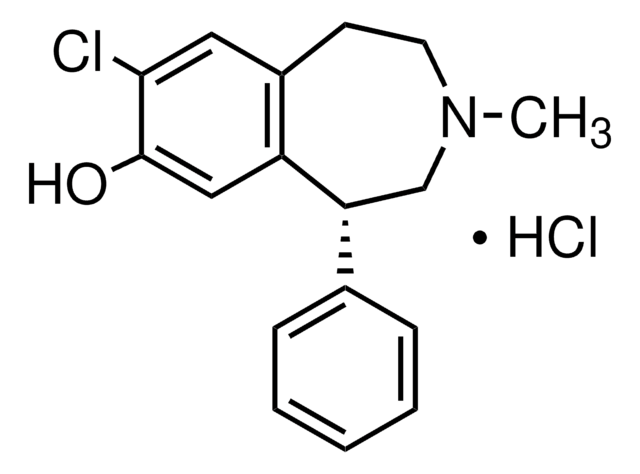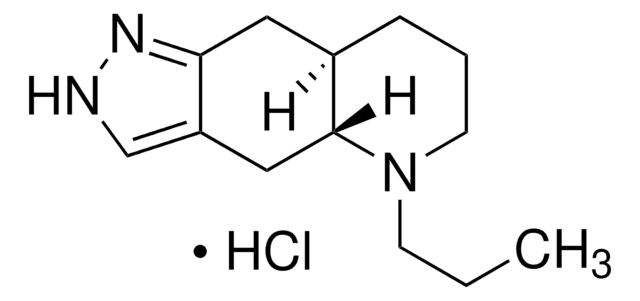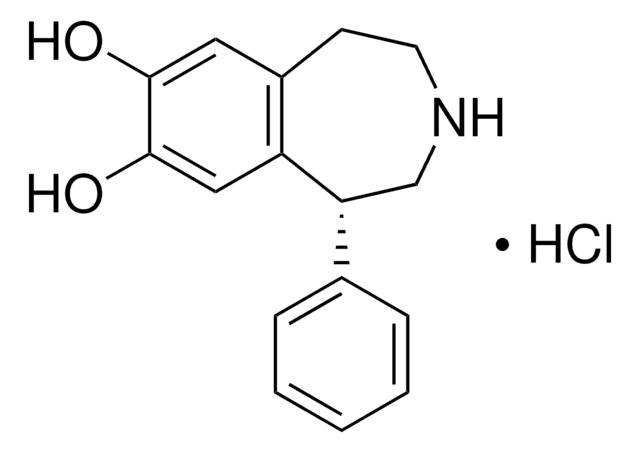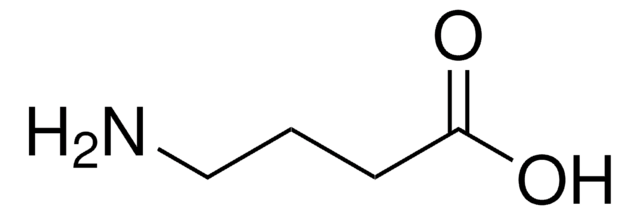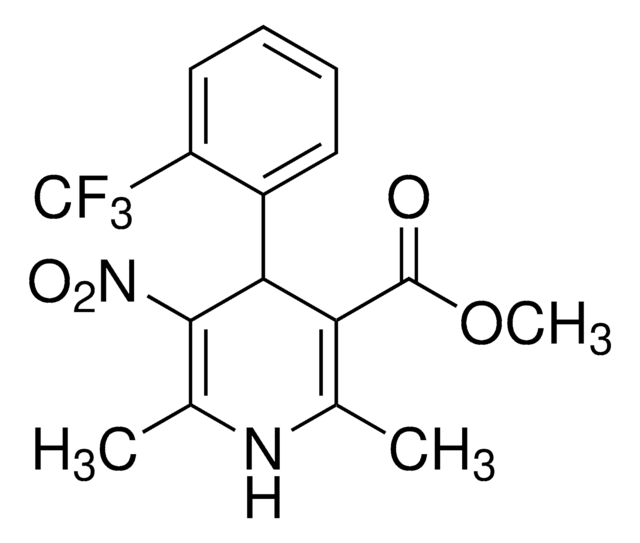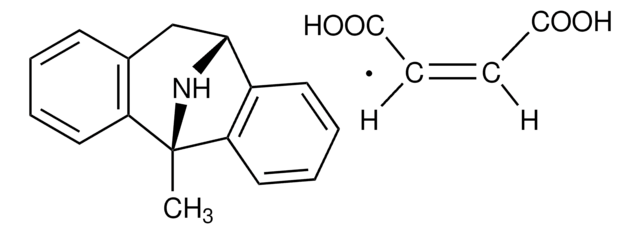おすすめの製品
品質水準
アッセイ
≥98% (HPLC)
形状
crystalline
保管条件
desiccated
protect from light
色
white
溶解性
H2O: >5 mg/mL
aqueous base: soluble (unstable)
SMILES記法
Cl.Oc1cc2CCNCC(c3ccccc3)c2cc1O
InChI
1S/C16H17NO2.ClH/c18-15-8-12-6-7-17-10-14(13(12)9-16(15)19)11-4-2-1-3-5-11;/h1-5,8-9,14,17-19H,6-7,10H2;1H
InChI Key
YEWHJCLOUYPAOH-UHFFFAOYSA-N
遺伝子情報
human ... DRD1(1812)
類似した製品をお探しですか? 訪問 製品比較ガイド
アプリケーション
(±)-SKF-38393塩酸塩は、ドーパミン作動性治療の一環として選択的D1受容体アゴニストとして使用されています。また、雄ヒヒのプロラクチンに対する作用を研究するために使用されています。
生物化学的/生理学的作用
(±)-SKF-38393は、D1ドーパミン受容体アゴニストです。海馬におけるグルタミン酸の産生を促進することが知られています。
注意
この物質は吸湿性があります。空気接触に敏感です。光感受性です。
シグナルワード
Warning
危険有害性情報
危険有害性の分類
Eye Irrit. 2 - Skin Irrit. 2 - STOT SE 3
ターゲットの組織
Respiratory system
保管分類コード
11 - Combustible Solids
WGK
WGK 3
引火点(°F)
Not applicable
引火点(℃)
Not applicable
個人用保護具 (PPE)
dust mask type N95 (US), Eyeshields, Gloves
試験成績書(COA)
製品のロット番号・バッチ番号を入力して、試験成績書(COA) を検索できます。ロット番号・バッチ番号は、製品ラベルに「Lot」または「Batch」に続いて記載されています。
Stimulation of dopamine D1 receptor improves learning capacity in cooperating cleaner fish
Messias JPM, et al.
Proc. Royal Soc. Lond. B., 283(1823), 20152272-20152272 (2016)
Prolactin and fMRI response to SKF38393 in the baboon
Miller B, et al.
PeerJ, 1(5), e195-e195 (2013)
Dopamine disruption increases cleanerfish cooperative investment in novel client partners
Soares MC, et al.
Royal Society open science, 4(5), 160609-160609 (2017)
The D1 dopamine receptor agonist SKF-38393 stimulates the release of glutamate in the hippocampus
Bouron A and Reuter H
Neuroscience, 94(4), 1063-1070 (1999)
David Kabelik et al.
Neuropharmacology, 58(1), 117-125 (2009-06-23)
Recent experiments demonstrate that aggressive competition for potential mates involves different neural mechanisms than does territorial, resident-intruder aggression. However, despite the obvious importance of mate competition aggression, we know little about its regulation. Immediate early gene experiments show that in
ライフサイエンス、有機合成、材料科学、クロマトグラフィー、分析など、あらゆる分野の研究に経験のあるメンバーがおります。.
製品に関するお問い合わせはこちら(テクニカルサービス)